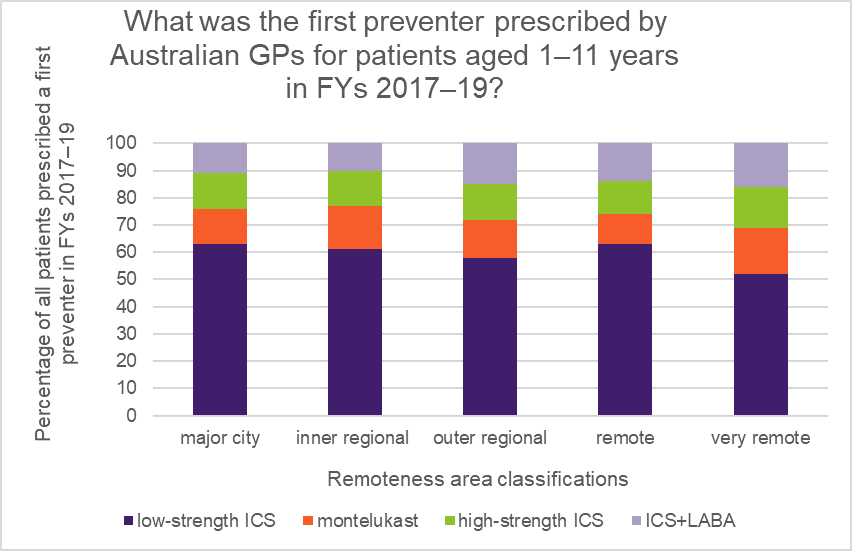Practice Review – Paediatric asthma: diagnosis and treatment
Australian GPs recently received a Practice Review on diagnosing and treating children's asthma. Find out more about how to read your Practice Review.
This Practice Review is intended to help doctors reflect on spirometry referrals and their prescribing of asthma medicines for children with asthma. It was developed in collaboration with GPs and has been sent to approximately 30,000 prescribers nationally, including all GPs.
The information on this page may help GPs interpret their individual Practice Review data.
Download and print a sample report
Frequently asked questions
Data from across Australia
The Practice Review that GPs received contained their own data, compared with that of their peers in similar areas of Australia.
The graph below shows further aggregate data on the first asthma preventers prescribed by Australian GPs in the different RA (remoteness area) categories.
Note that low-dose ICS and montelukast are recommended by guidelines.

For more information on remoteness area (RA) classifications see ‘What is the RA?’
Read an accessible text version of this graph
Points for reflection
- If regular preventer treatment is required, guidelines recommend prescribing low-dose ICS (or montelukast) as the initial preventer for children aged 1–11. Most patients will be able to achieve good asthma control at this step.
- Assess response to preventer treatment after 4–6 weeks and adjust treatment depending on the child’s age.
- Step up treatment for children whose asthma remains poorly controlled despite good adherence and correct inhaler technique.
- Check adherence and inhaler technique at each visit.
I would like to know more
Find out more about our national program: Paediatric asthma: breathing new life into diagnosis and management and access a range of clinical tools and patient resources as well as CPD activities
- Book an educational visit (available as a virtual visit)
- Read the MedicineWise News: Spirometry and its role in diagnosing children’s asthma
Additional resources:
